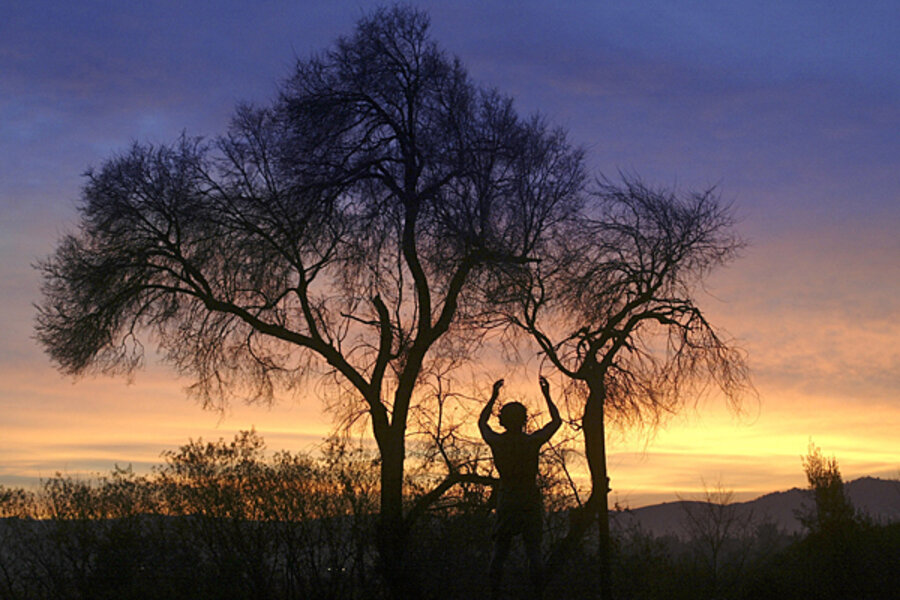Winter solstice 2009: What it's all about
Loading...
Ah, another winter solstice come and gone.
At 5:47 p.m. Greenwich Mean Time (that's 12:47 p.m. Eastern Standard Time) Monday, the Northern Hemisphere marked the mid-point of another year, as measured by the sun's highest position each day above the horizon. On the winter solstice, the sun's maximum height above the horizon is at its lowest point in the sky for the year. It's the day with the fewest hours of sunlight this year.
Yes, this is showing a Northern Hemisphere bias. South of the equator, the day marks the most hours of sunlight of the year. So enjoy the austral summer, those of you below the equator. The rest of us? We'll be rooting for longer, warmer days.
The event, of course, owes its existence to the tilt of Earth's axis as the third rock from the Sun revolves around its parent star. Imagine that someone poked a suitably sharpened, oversized No. 2 pencil through the planet from the North Pole to the South Pole. Today, the eraser is pointed away from the sun by the largest angle of the year – some 23 degrees, 26 minutes off vertical, with vertical measured against the plane of the Earth's orbit.
Six months from now, that eraser will point toward the sun by the same angle, exposing the Northern Hemisphere to the longest period of sunlight in a day.
Not like a clock
But as the hours of daylight grow between now and June 21, 2010, don't look for the increase to grow by equal amounts of time on either side of noon each day. Sunrises will still come later each day into next month, even as sunsets continue to come later in the day, as they have since early this month.
In Boston, for instance the latest sunrises will occur between Jan. 2 and Jan. 5, 2010. But the earliest sunsets came between Dec. 3 and Dec. 14, 2009. You can check similar numbers for your location at the US Naval Observatory's website.
The reason for the apparently out-of-sync changes? The shifting orientation of Earth's tilt with respect to the sun, along with the elliptical shape of Earths' orbit, combine to alter the times of sunrise and sunset unequally compared with what you might expect using a clock's 24-hour day.
The summer and winter solstices tend to mark the beginning of summer and winter in many western cultures. But in east Asian cultures, they mark the middle of those seasons. One of the characters the Chinese use in their word for the event represents "extreme."
It's no surprise that the winter solstice has been celebrated – and feared – for millenniums. Ancients slaughter livestock in anticipation of dwindling grain supplies during the harshest period of winter, when they also expected their population to dwindle.
The beginning of the end
If you happen to be wintering over at the research stations in Antarctica, the Southern Hemisphere's winter solstice in June sets off a frenzied period of celebration: You've made it through half of your wintering-over period, and there's nowhere to go but up.
And oh yes, the ancient Mayans. Their calendar ends with the winter solstice in 2012, and that means mega-disasters, right? That's certainly Hollywood's take, if the movie "2012" is any indication.
Well, not so much, Mayan experts say. Mayan archaeologists point out that the winter solstice in 2012 merely marks the end of the 13th B'ak'tun, a "long-count" period. Each B'ak'tun lasts some 394.3 years by modern measurements.
But the portion of the Mayan calendar that tracks these "long counts" runs out to 20 B'ak'tuns.
Ah, so Hollywood got it right, just 2,760 years too early? Probably not. It's more like the Y2K problem that had computer programmers designing software patches like crazy in the run-up to the turn of the millennium. Time didn't stop. The world didn't end. It's just that the early programmers hadn't planned that far in advance.
--
Follow us on Twitter.





